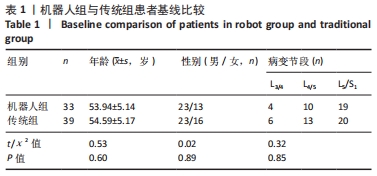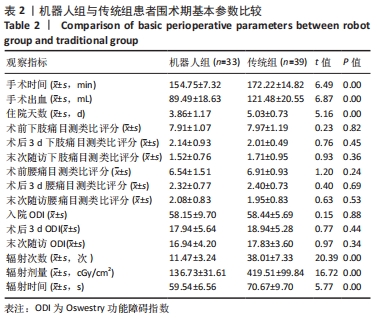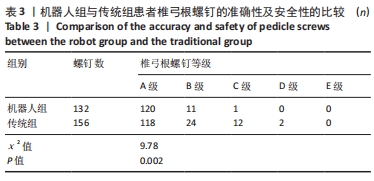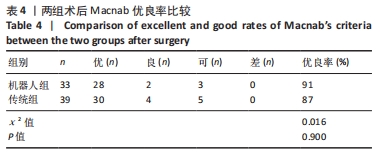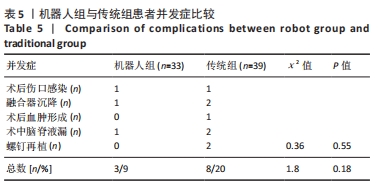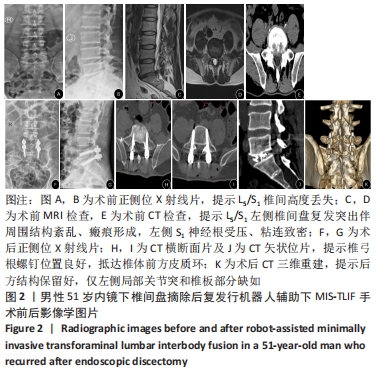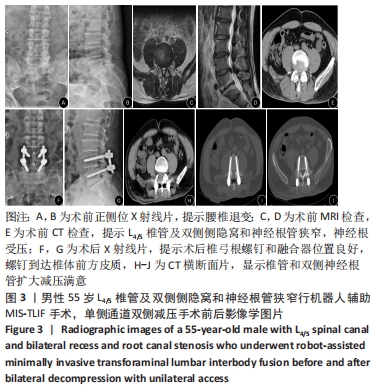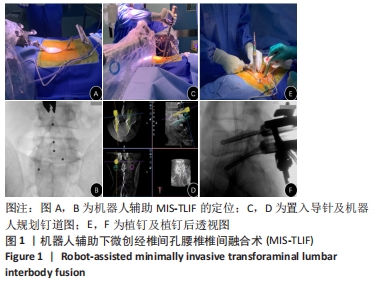[1] FOLEY KT, HOLLY LT, SCHWENDER JD. Minimally invasive lumbar fusion. Spine. 2003;28(15 Suppl):S26-35.
[2] WANG L, LI H, ZHAO Y, et al. Ligamentum-preserved/temporary preserved minimally invasive transforaminal lumbar interbody fusion (MIS-TLIF) for lumbar spondylolisthesis: technical note and two-years follow-up.Spine (Phila Pa 1976). 2021 Jun 2. doi: 10.1097/BRS.0000000000004136.
[3] AO S, ZHENG W, WU J, et al. Comparison of Preliminary clinical outcomes between percutaneous endoscopic and minimally invasive transforaminal lumbar interbody fusion for lumbar degenerative diseases in a tertiary hospital: Is percutaneous endoscopic procedure superior to MIS-TLIF? A prospective cohort study. Int J Surg. 2020;76: 136-143.
[4] LEE MJ, MOK J, PATEL P. Transforaminal Lumbar Interbody Fusion: Traditional Open Versus Minimally Invasive Techniques. J Am Acad Orthop Surg. 2018;26(4):124-131.
[5] KIM CH, EASLEY K, LEE JS, et al. Comparison of Minimally Invasive Versus Open Transforaminal Interbody Lumbar Fusion. Global Spine J. 2020;10(2 Suppl):143s-150s.
[6] LEE KH, YEO W, SOEHARNO H,et al. Learning curve of a complex surgical technique: minimally invasive transforaminal lumbar interbody fusion (MIS TLIF). J Spinal Disord Tech. 2014;27(7):E234-240.
[7] KIM MC, CHUNG HT, CHO JL, et al. Subsidence of polyetheretherketone cage after minimally invasive transforaminal lumbar interbody fusion. J Spinal Disord Tech. 2013;26(2):87-92.
[8] GERTZBEIN SD, ROBBINS SE. Accuracy of pedicular screw placement in vivo. Spine. 1990;15(1):11-4.
[9] HELLER GZ, MANUGUERRA M, CHOW R. How to analyze the Visual Analogue Scale: Myths, truths and clinical relevance. Scand J Pain. 2016;13:67-75.
[10] FAIRBANK JC, PYNSENT PB. The Oswestry Disability Index. Spine. 2000; 25(22):2940-2952;discussion 52.
[11] MACNAB I. Negative disc exploration. An analysis of the causes of nerve-root involvement in sixty-eight patients. J Bone Joint Surg Am. 1971;53(5):891-903.
[12] YAO YC, CHOU PH, LIN HH, et al. Risk Factors of Cage Subsidence in Patients Received Minimally Invasive Transforaminal Lumbar Interbody Fusion. Spine. 2020;45(19):E1279-e1285.
[13] SCHUIJT HJ, HUNDERSMARCK D, SMEEING DPJ, et al. Robot-assisted fracture fixation in orthopaedic trauma surgery: a systematic review. OTA Int. 2021;4(4):e153.
[14] DU W, SUN T, DING Y, et al. Robot-assisted treatment of unstable pelvic fractures with a percutaneous iliac lumbar double rod fixation combined with a percutaneous pelvic anterior ring INFIX fixation. Int Orthop. 2020;44(6):1223-1232.
[15] 姜树东. 机器人辅助MIS-TLIF手术治疗腰椎退行病的初步结果[J]. 中国矫形外科杂志,2020,28(7):586-591.
[16] YANG JS, HE B, TIAN F, et al. Accuracy of Robot-Assisted Percutaneous Pedicle Screw Placement for Treatment of Lumbar Spondylolisthesis: A Comparative Cohort Study. Med Sci Monit. 2019;25:2479-2487.
[17] YANG J, HAO D, LIU T, et al. Comparison of accuracy between robot-assisted and fluoroscopy-guided percutaneous pedicle screw placement for treatment of lumbar spondylolisthesis. Zhongguo xiu fu chong jian wai ke za zhi. 2018;32(11):1371-1376.
[18] GARG B, MEHTA N. Minimally invasive transforaminal lumbar interbody fusion (MI-TLIF): A review of indications, technique, results and complications. J Clin Orthop Trauma. 2019;10(Suppl 1):S156-s62.
[19] CHEN X, SONG Q, WANG K, et al. Robot-assisted minimally invasive transforaminal lumbar interbody fusion versus open transforaminal lumbar interbody fusion: a retrospective matched-control analysis for clinical and quality-of-life outcomes. J Comp Eff Res. 2021;10(10):845-856.
[20] CUI GY, HAN XG, WEI Y, et al. Robot-Assisted Minimally Invasive Transforaminal Lumbar Interbody Fusion in the Treatment of Lumbar Spondylolisthesis. Orthop Surg. 2021;13(7):1960-1968.
[21] ZHAO JX, LI C, REN H, et al. Evolution and Current Applications of Robot-Assisted Fracture Reduction: A Comprehensive Review. Ann Biomed Eng. 2020;48(1):203-224.
[22] WU XB, WANG JQ, SUN X, et al. Guidance for Treatment of Pelvic Acetabular Injuries with Precise Minimally Invasive Internal Fixation Based on the Orthopaedic Surgery Robot Positioning System. Orthop Surg. 2019;11(3):341-347.
[23] LENER S, WIPPLINGER C, HERNANDEZ RN,et al. Defining the MIS-TLIF: A Systematic Review of Techniques and Technologies Used by Surgeons Worldwide. Global Spine J. 2020; 10(2 Suppl): 151s-167s.
[24] Zhao Y, Yuan S, Tian Y, et al. Risk Factors Related to Superior Facet Joint Violation During Lumbar Percutaneous Pedicle Screw Placement in Minimally Invasive Transforaminal Lumbar Interbody Fusion (MIS-TLIF). World Neurosurg. 2020;139:e716-e723.
[25] ZHOU LP, ZHANG RJ, LI HM, et al. Comparison of Cranial Facet Joint Violation Rate and Four Other Clinical Indexes Between Robot-assisted and Freehand Pedicle Screw Placement in Spine Surgery: A Meta-analysis. Spine. 2020;45(22):E1532-e1540.
[26] RINGEL F, STÜER C, REINKE A, et al. Accuracy of robot-assisted placement of lumbar and sacral pedicle screws: a prospective randomized comparison to conventional freehand screw implantation. Spine. 2012;37(8):E496-501.
[27] Yang DS, Li NY, Kleinhenz DT, et al. Risk of Postoperative Complications and Revision Surgery Following Robot-assisted Posterior Lumbar Spinal Fusion. Spine. 2020;45(24):E1692-e1698.
[28] FU W, TONG J, LIU G, et al. Robot-assisted technique vs conventional freehand technique in spine surgery: A meta-analysis. Int J Clin Pract. 2021;75(5):e13964.
[29] Fatima N, Massaad E, Hadzipasic M,et al. Safety and accuracy of robot-assisted placement of pedicle screws compared to conventional free-hand technique: a systematic review and meta-analysis. Spine J. 2021;21(2):181-192.
[30] MODI HN, SHRESTHA U. Comparison of Clinical Outcome and Radiologic Parameters in Open TLIF Versus MIS-TLIF in Single- or Double-Level Lumbar Surgeries. Int J Spine Surg. 2021;15(5):962-970.
[31] 张啟维, 张耀南, 孙常太, 等. 计算机导航下椎弓根置钉与徒手置钉的对比[J]. 中国组织工程研究,2013,17(9):1579-1585.
[32] LEE JH, JEON DW, LEE SJ,et al. Fusion rates and subsidence of morselized local bone grafted in titanium cages in posterior lumbar interbody fusion using quantitative three-dimensional computed tomography scans. Spine. 2010;35(15):1460-1465.
[33] Agarwal N, White MD, Zhang x, et al. Impact of endplate-implant area mismatch on rates and grades of subsidence following stand-alone lateral lumbar interbody fusion: an analysis of 623 levels. Neurosurg Spine. 2020:1-5. doi: 10.3171/2020.1.SPINE19776.
[34] BOCAHUT N, AUDUREAU E, POIGNARD A,et al. Incidence and impact of implant subsidence after stand-alone lateral lumbar interbody fusion. Orthop Traumatol Surg Res. 2018;104(3):405-410.
[35] SATAKE K, KANEMURA T, NAKASHIMA H,et al. Cage subsidence in lateral interbody fusion with transpsoas approach: intraoperative endplate injury or late-onset settling. Spine Surg Relat Res. 2017;1(4):203-210.
[36] CHATHAM LS, PATEL VV, YAKACKI CM,et al. Interbody Spacer Material Properties and Design Conformity for Reducing Subsidence During Lumbar Interbody Fusion. J Biomech Eng. 2017;139(5):0510051-0510058.
[37] SHAFI KA, POMPEU YA, VAISHNAV AS, et al. Does robot-assisted navigation influence pedicle screw selection and accuracy in minimally invasive spine surgery? Neurosurg Focus. 2022;52(1):E4.
[38] MOHAMMAD-SHAHI MH, NIKOLAOU VS, GIANNITSIOS D,et al. The effect of angular mismatch between vertebral endplate and vertebral body replacement endplate on implant subsidence. J Spinal Disord Tech. 2013;26(5):268-273.
|

